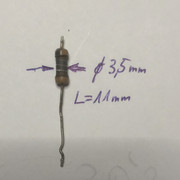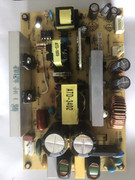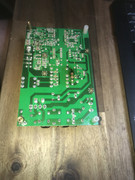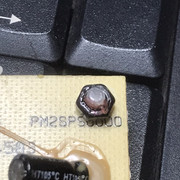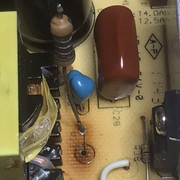Post by howie on Oct 12, 2013 7:58:14 GMT -5
Heating season is right around the corner. Some have already run there heat and some have not. Before each heating season it is advisable to replace your air filter.
Some (not all) furnace control boards monitor how many times a furnace reaches operating limit during a single call for heat and those that do may have a preset number of times it will let it reach limit before is sets a code and shuts down. CHANGE THOSE FILTERS and CHANGE THOSE THERMOSTAT BATTERIES.
OK, so you've turned on your furnace and oooops, no heat. After you have made sure your thermostat is in heat mode and is in fact calling for heat, visually inspect the breaker or fuse in the main electrical panel, the Gas emergency switch located outside the furnace room (if you have one) and the service switch located on the side of the furnace. Just make sure they are in the on position. DO NOT TOGGLE THEM OFF AND ON. If the furnace is getting power and a call for heat from the thermostat but will not come on, the control board should be storing a code. That code is your best friend when it comes to diagnosing your problem. Cutting power before harvesting the code or codes
will clear the memory and you'll have to start from scratch. Collecting the code is usually pretty simple. Most control boards are located in the blower compartment. The cover to the blower compartment will have a small clear plastic peep hole for you to look through The power and diagnostic LED's are not always in direct line with this window so you may have to look from all angles to view it. Do not remove the cover to see it. The blower compartment is equiped with a door switch that when opened will cut power clearing the code. The code is usually read after the longest pause in flashing. Each manufacturers code is different but the codes are usually listed on the inside cover. After the longest pause you might see something like this blink...blink blink (a blink with a short pause followed by two blinks) this is code 12 and just a example of how to read it.
Look up that code located on the sticker somewhere on your furnace. That code may tell you exactly what the problem is or list reasons that the particular code was set.
In the case of a code that indicates a open limit switch, this could be a malfunctioning plenum temperature switch (automatic reset high limit switch) that has stuck open or something more serious, a spill switch. A spill switch ( AKA roll out switch or blocked vent switch ) is a manual reset temperature sensitive switch located near the main burners. They pop for a reason. If exhaust gas is backing up into the burner enclosure, temperature quickly rises and trips the switch. THIS IS YOUR FIRST LINE OF DEFENCE AGAINST CARBON MONOXIDE POISONING. Do not bypass it. These tripping usually means a blocked vent or clogged secondary heat exchanger. Someone with experiance can judge by simply looking at the flame that there is a problem. The flame entering each tube of the primary heat exchanger should look the same. The flame should look like that of a propane torch. All of the flame is sucked into the heat exchanger tubes from the combustion inducer fan. If you are looking at it and see ANY flame fluttering outside of the enterance of the heat exchanger tube, you have roll out. About this time you should consider calling in a pro. Most other codes will point you in the direction of a failed part which you could change on your own. I would suggest using OEM parts for home owner repair. Universal parts usually mean adjusting them to match what you are replacing. Also OEM parts are not that much more expensive than universal parts.
Ask away but remember, any repairs you attempt on your own is at your own risk.
Some (not all) furnace control boards monitor how many times a furnace reaches operating limit during a single call for heat and those that do may have a preset number of times it will let it reach limit before is sets a code and shuts down. CHANGE THOSE FILTERS and CHANGE THOSE THERMOSTAT BATTERIES.
OK, so you've turned on your furnace and oooops, no heat. After you have made sure your thermostat is in heat mode and is in fact calling for heat, visually inspect the breaker or fuse in the main electrical panel, the Gas emergency switch located outside the furnace room (if you have one) and the service switch located on the side of the furnace. Just make sure they are in the on position. DO NOT TOGGLE THEM OFF AND ON. If the furnace is getting power and a call for heat from the thermostat but will not come on, the control board should be storing a code. That code is your best friend when it comes to diagnosing your problem. Cutting power before harvesting the code or codes
will clear the memory and you'll have to start from scratch. Collecting the code is usually pretty simple. Most control boards are located in the blower compartment. The cover to the blower compartment will have a small clear plastic peep hole for you to look through The power and diagnostic LED's are not always in direct line with this window so you may have to look from all angles to view it. Do not remove the cover to see it. The blower compartment is equiped with a door switch that when opened will cut power clearing the code. The code is usually read after the longest pause in flashing. Each manufacturers code is different but the codes are usually listed on the inside cover. After the longest pause you might see something like this blink...blink blink (a blink with a short pause followed by two blinks) this is code 12 and just a example of how to read it.
Look up that code located on the sticker somewhere on your furnace. That code may tell you exactly what the problem is or list reasons that the particular code was set.
In the case of a code that indicates a open limit switch, this could be a malfunctioning plenum temperature switch (automatic reset high limit switch) that has stuck open or something more serious, a spill switch. A spill switch ( AKA roll out switch or blocked vent switch ) is a manual reset temperature sensitive switch located near the main burners. They pop for a reason. If exhaust gas is backing up into the burner enclosure, temperature quickly rises and trips the switch. THIS IS YOUR FIRST LINE OF DEFENCE AGAINST CARBON MONOXIDE POISONING. Do not bypass it. These tripping usually means a blocked vent or clogged secondary heat exchanger. Someone with experiance can judge by simply looking at the flame that there is a problem. The flame entering each tube of the primary heat exchanger should look the same. The flame should look like that of a propane torch. All of the flame is sucked into the heat exchanger tubes from the combustion inducer fan. If you are looking at it and see ANY flame fluttering outside of the enterance of the heat exchanger tube, you have roll out. About this time you should consider calling in a pro. Most other codes will point you in the direction of a failed part which you could change on your own. I would suggest using OEM parts for home owner repair. Universal parts usually mean adjusting them to match what you are replacing. Also OEM parts are not that much more expensive than universal parts.
Ask away but remember, any repairs you attempt on your own is at your own risk.





